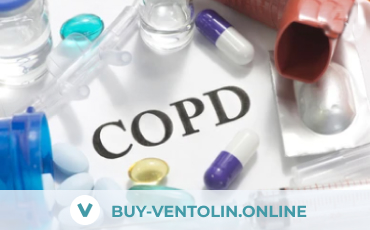Key facts
- Chronic obstructive pulmonary disease (COPD) is a progressive, life-threatening lung disease that causes shortness of breath (initially with exertion) predisposing to exacerbation and serious illness.
- According to the Global Burden of Disease Study, in 2016, the global prevalence of COPD was 251 million cases.
- An estimated 3.17 million people globally died from the disease in 2015, accounting for nearly 5% of all global deaths this year.
- More than 90% of COPD deaths occur in low- and middle-income countries.
- The main cause of COPD is tobacco smoke (from tobacco consumption or second-hand smoke inhalation).
- Other risk factors include outdoor and indoor air pollution and exposure to air pollution from smoke and dust in the workplace.
- Indoor air pollution can negatively impact unborn babies and put them at risk of developing COPD later in life.
- In some cases, COPD is associated with long-term asthma.
- The likelihood of an increase in COPD prevalence is high adult smoking prevalence in many countries.
- Many cases of COPD are preventable by smoking cessation or early smoking cessation. It is therefore important that countries adopt the WHO Convention on Tobacco Control (WHO FCTC) and implement the MPOWER package to make smoking cessation the norm around the world.
- COPD is incurable, but treatment can relieve symptoms, improve quality of life, and reduce the risk of death.
Chronic obstructive pulmonary disease is a lung disease characterized by a chronic restriction of airflow in the airways. COPD symptoms worsen over time. Dyspnea on exertion gradually turns into dyspnea at rest. This disease is often underdiagnosed and can be life-threatening. Previously, COPD was often referred to as chronic bronchitis and emphysema.

Risk factors
The main cause of COPD is tobacco smoke (including secondhand smoke inhalation, or secondhand smoke). Other risk factors include:
- indoor air pollution (for example, from the use of solid fuels for cooking and heating);
- air pollution;
- presence of dust and chemicals in the workplace (vapors, irritants and fumes);
- frequent lower respiratory tract infections during childhood.
Many cases of COPD are preventable. Comprehensive implementation of the WHO FCTC will reduce smoking prevalence and the burden of COPD worldwide.
Who is at risk?
In the past, men were more likely to suffer from COPD, however, because women in high-income countries have the same prevalence of smoking as men, and women in low-income countries are more exposed to pollution indoor air (for example, from the use of solid fuels for cooking and heating), today the disease affects men and women in almost equal proportions.
More than 90% of COPD deaths occur in low- and middle-income countries, where effective strategies for the prevention and control of the disease are not readily or readily available.
Symptoms
Chronic obstructive pulmonary disease develops slowly and, as a rule, manifests itself in people over 40-50 years old. The most common symptoms of COPD are shortness of breath (“shortness of breath”), chronic cough, and sputum production. As the patient’s health deteriorates, it may be difficult to even carry out normal daily activities, such as climbing a short flight of stairs or carrying a suitcase. In addition, patients often experience exacerbations, i.e. severe episodes of severe shortness of breath, cough, and sputum production that last from several days to several weeks. These episodes can lead to a marked decrease in working capacity and the emergence of a need for emergency medical care (including hospitalization), and sometimes death.
Diagnosis and Treatment
Chronic obstructive pulmonary disease (COPD) is usually suspected in people who have the symptoms described above. The diagnosis can be confirmed by a breath test called spirometry, which measures how much air a person can breathe out at a time with maximum effort, and how quickly.
Chronic obstructive pulmonary disease is incurable. However, available drugs and physical therapy can relieve symptoms, increase exercise capacity and quality of life, and reduce the risk of death. The most effective and cost-effective treatment for COPD in smokers is smoking cessation. This will slow down the course of the disease and reduce mortality from causes associated with COPD. Some (but not all) patients with COPD benefit from inhaled corticosteroids.
Also, the drug Ventolin in the form of tablets or aerosol is perfect for the treatment and relief of symptoms of COPD.
Availability of opportunities for diagnosis and treatment of COPD depends on the level of resource availability. WHO has published guidelines with specific recommendations for the management of COPD in primary health care settings and in resource-limited settings.

WHO activities
WHO’s work on COPD is an integral part of the organization’s overall efforts to prevent and control noncommunicable diseases. The goals of WHO are:
- raising awareness of the global epidemic of noncommunicable diseases;
- creating a healthier environment, especially for the poor and disadvantaged groups;
- reducing common risk factors for the development of noncommunicable diseases, such as tobacco use, unhealthy diet and physical inactivity;
- prevention of premature death and preventable disability from major noncommunicable diseases.
The WHO Framework Convention on Tobacco Control was developed in response to the globalization of the tobacco epidemic, with the goal of protecting billions of people from the harmful effects of tobacco. This is the first global health agreement concluded by WHO and ratified by more than 180 countries.
WHO also leads the Global Alliance Against Chronic Respiratory Diseases (GARD), a volunteer network of national and international organizations, institutions and agencies working towards the common goal of reducing the global burden of chronic respiratory diseases. The Alliance envisions a world where all people can breathe unhindered. GARB focuses on the needs of low- and middle-income countries and vulnerable populations.












I have received my package. thank you. Will use my discount for further orders! Thanks.
I have received my package and it is in fine condition. Thanks.
Hi i have received my package. Thank you!